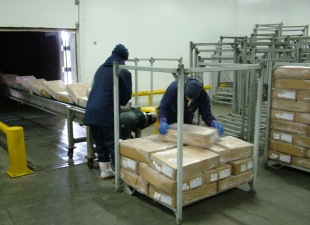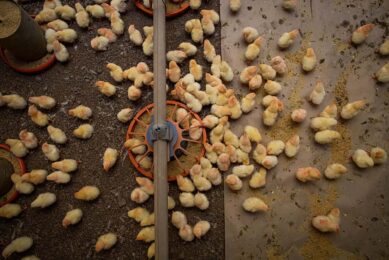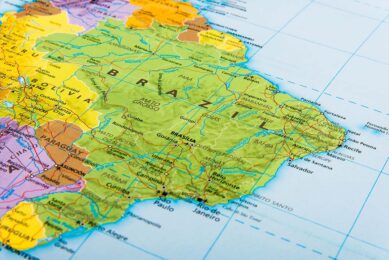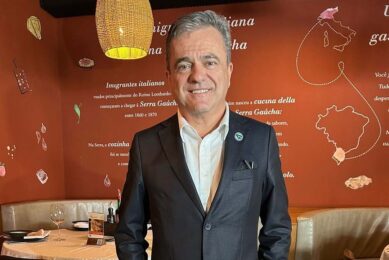Brazil turning to buoyant domestic market

Almost 20% more chicken was sold in Brazil in 2010 than in 2009, while less than 6% more was exported. The gap between export and domestic price has narrowed to virtually nothing recently.
By Patrick Knight , São Paulo, Brazil
With demand for Brazilian poultry meat stagnant or falling in several of its most profitable markets, notably EU member countries, but also in several countries in the Middle East and Asia, Brazil’s poultry industry is turning increasingly to the buoyant domestic market.
A record 44 kg of chicken was consumed per capita in Brazil last year, more than 4 kg per head more than in 2009.
The steady rise in the value of the Brazilian currency, the Real, against most other currencies has made exporting less profitable. So although poultry meat exports earned a record 6 billion US dollars last year, 17% more than in 2009, revenues in the local currency in which costs are incurred, did not rise so much. Strong economic growth and the even faster growth in consumption, encouraged by cheap imports and easier access to credit, have made the domestic market steadily more attractive.
Whole birds export
The gap between the price of exports and the meat sold on the domestic market has narrowed sharply in the second half of 2010. Over a million tonnes of the additional 1.3 million tonnes of poultry meat produced last year, when output totalled 12.3 million tonnes, was sold on the domestic market, an increase of close to 20%.Exports on the other hand increased by just over 5%, an extra 170,000 tonnes. Because of the increasing importance of countries in the developing world, notably in Africa, Asia and Latin America, where incomes are relatively low, most of the growth in exports last year was of whole birds, which costs less than normal cuts, salted cuts or processed products.
The gap between the price of exports and the meat sold on the domestic market has narrowed sharply in the second half of 2010. Over a million tonnes of the additional 1.3 million tonnes of poultry meat produced last year, when output totalled 12.3 million tonnes, was sold on the domestic market, an increase of close to 20%.Exports on the other hand increased by just over 5%, an extra 170,000 tonnes. Because of the increasing importance of countries in the developing world, notably in Africa, Asia and Latin America, where incomes are relatively low, most of the growth in exports last year was of whole birds, which costs less than normal cuts, salted cuts or processed products.
The strong growth for whole birds is in contrast to the pattern of the past 20 years, when the share of the market of whole birds had fallen steadily, with more cuts and processed products being sold year by year.
Six percent less processed products and salted cuts, the majority destined for Europe, were sold last year as in the peak year of 2008. Because prices were lower, export earnings from these products fell by 9% last year.
Last year the amount of poultry meat consumed per capita experienced a rise of 15%, to a total of 8.4 million tonnes sold in Brazil.
Surge in credit
Following increases in price to compensate for the soaring price of maize and soya meal, the year ended with domestic prices only slightly below those of exports, despite export prices having risen by about 16% during 2010, to average $1,800 per tonne in December.
The situation could change slightly this year, when Brazil’s economy is expected to grow more slowly than the 8% of 2010. Measures to cool an overheated economy, caused partly because of the fall in the cost of imports as well as a surge in credit are expected this year. The high price of beef, which rose by almost 50% during 2010 is encouraging farmers to re-build stocks which were reduced in 2007, when they were forced to sell a high proportion of cows. Increased supply could result in the price of beef falling slightly this year, which would force the poultry meat industry to lower prices as well.
Favourite investors destination
Few analysts expect the Brazilian currency to lose more ground against the US dollar and other currencies during 2011. Brazil remains a favourite destination for foreign investors and speculators, although a series of measures designed to prevent the currency rising further are being taken.For exporting to remain profitable, the Brazilian exporters plan to raise prices. This may encounter resistance, although the industry argues that demand is strong, with stocks in many countries still lower than in 2008.
Few analysts expect the Brazilian currency to lose more ground against the US dollar and other currencies during 2011. Brazil remains a favourite destination for foreign investors and speculators, although a series of measures designed to prevent the currency rising further are being taken.For exporting to remain profitable, the Brazilian exporters plan to raise prices. This may encounter resistance, although the industry argues that demand is strong, with stocks in many countries still lower than in 2008.
Brazil’s share of the poultry meat imported by EU countries has fallen from 76% of the total to 72% over the past two years, and 20% less was sold to the EU last year than in 2009.
The price of the meat exported to the EU averaged $2,560 per tonne last year, more than twice that of the meat sold to African countries. Although sales to countries of the Middle East, where prices averaged $1,666 per tonne in 2010, increased by 0.7% last year, this was mainly because of the increasing importance of just two countries, Iraq and Iran, who each bought 30,000 tonnes more. Half a dozen other leading importers in the region bought less, presumably because they bought more lower cost meat from the United States and Thailand.
Processed and fresh
Only two really important new markets for Brazilian meat have emerged in the past few years, Turkey and Egypt, and these are mainly for whole birds. The hope for an increase in exports to China, now open to direct imports rather than them having to be channelled through Hong Kong, have been disappointing. If China itself has bought more, less has been sold to Hong Kong. With its population starting to fall, sales to Japan, which pays the highest prices have stagnated, while those to Russia have fallen steadily in recent years as the country moves towards self-sufficiency.
As far as the domestic market is concerned, leading exporter Brasil Foods had already reduced the amount of whole birds and basic cuts sold in Brazil itself. They have increasingly concentrated on processed foods, now responsible for more than half their earnings on the domestic market.When the Seara company was owned by Cargill, the company exported most of the processed products it made. But Seara’s new owners, the Marfrig group, is now diverting more high value processed products to the more profitable domestic market.
Research has shown that less than a third of the 44 kg of chicken consumed per capita last year, was taken home in fresh form for preparation there. Two thirds of the total was either eaten out of home at restaurants, or was in the form of processed products.
Narrowing the gap
Much of the spectacular increase in domestic consumption is due to the fact that 30 million consumers have been vertically mobile in Brazil in the past five years.
Much of the spectacular increase in domestic consumption is due to the fact that 30 million consumers have been vertically mobile in Brazil in the past five years.
Earnings have been boosted by big increases to the minimum wage, as well as to pensions and other social programmes, introduced or strengthened by the government. Unemployment has fallen steadily over the past few years and average wages have increased as well.
Although the Brazilian economy is expected to grow by only 4-5% this year and even if some measures are taken to slow the rise of the Real, this is unlikely to greatly affect meat consumption.
Officials at the Association of Poultry Meat Producers and Exporters, Ubabef, predict that 3-5% more chicken will be exported this year, an extra 200,000 tonnes or so.More than 525 million chicks have been lodged in each of the past three months, which will mean over a million tonnes of meat will be produced each month this year.The main constraint this year, is that due to the sharp increase in the price of maize and soya meal, the price of poultry meat has risen by 20%, narrowing the gap between it and the cheaper cuts of beef.
Recovering the ground lost in the most profitable markets may not be easy for Brazil to do, but although poultry meat from Brazil lost some ground last year, its natural advantages should restore vigour before long.
Join 31,000+ subscribers
Subscribe to our newsletter to stay updated about all the need-to-know content in the poultry sector, three times a week. Beheer
Beheer








 WP Admin
WP Admin  Bewerk bericht
Bewerk bericht